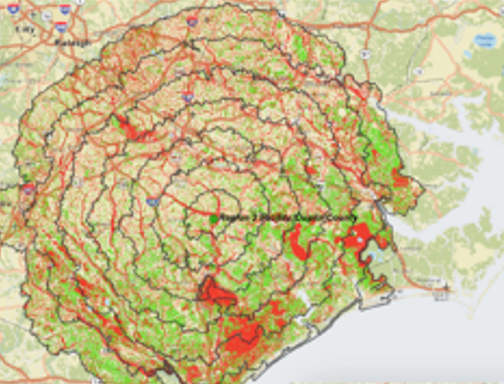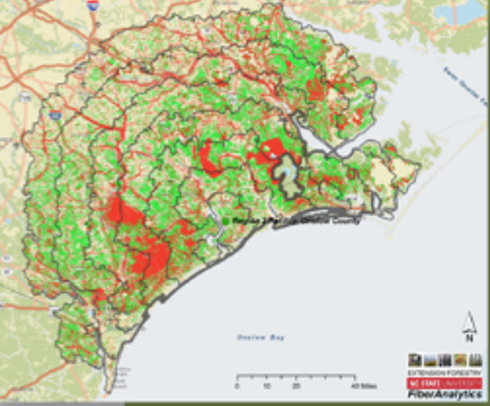In an effort to identify sources of renewable fuels, three wood fiber supply assessments were conducted for the US Marines Corps, Marines Corps Installations East (MCIEAST) by Extension Forestry at North Carolina State University. This assessment was conducted to explore the supply regions for Region 1 (New Bern, NC), Region 2 (Jacksonville, NC), and Region 3 (Kenansville, NC).
Key Findings for all supply regions
- Opportunities on the Hofmann for Fuel Chip Production
- 2,000 acres of final harvests annually yielding 10,000 to 20,000 green tons of fuel
- 3,500 acres of pine plantation thinnings yielding 15,000 to 20,000 green tons of fuel from recovered residues
- Chipped thinnings on 3,500 ac/yr depending on pulpwood markets
- 20,000 acres needing fuel reduction. Opportunity will be captured when self-propelled chip recovery technology improves
- Opportunities on the Croatan National Forest (CNF) for Fuel Chip Production:
- 20 acres of final harvests annually yielding 100 to 200 green tons of fuel
- 600 acres of pine plantation thinnings yielding 2,500 to 3,500 green tons of fuel from residues recovered.
- Chipped thinnings on 600 ac/yr depending on pulpwood markets
- Fuel reduction opportunities will be captured when self-propelled chip recovery technology improves and as Federal policies fund cost-sharing operations on national forests for fuel reductions
- Prices for clean chips in North Carolina have been consistently lower than the U.S. Southeastern clean chips prices.
- Eastern North Carolina pine and hardwood pulpwood prices are consistently lower than the south-wide average pulpwood prices.
- Over the period from 2006 to 2010 in the southeastern United States, cut and load rates for the Coastal Plain region were consistently lower than the Piedmont region.
For the full report with more information and results delineated by region CLICK HERE

